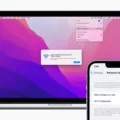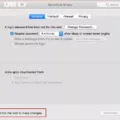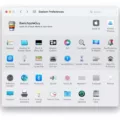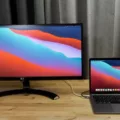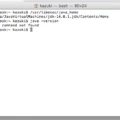The Mac Dock is an essential part of the macOS user interface, providing quick access to your favorite apps and frequently used files. However, there may be instances when the Dock becomes unresponsive, causing frustration and hindering your productivity. In this article, we will explore some possible causes of this issue and provide solutions to help you get your Dock back up and running smoothly.
One common reason for an unresponsive Dock is excessive pressure on your Mac’s CPU and RAM caused by animation effects. By default, the Dock has various animation effects, such as magnification, that can put a strain on your system resources. To alleviate this pressure, you can disable these effects.
To do this, go to System Preferences (or System Settings in macOS Ventura) and click on “Dock & Menu Bar.” Here, you will find an option labeled “Magnification.” Uncheck this option to disable the magnification effect. You can also consider disabling other animation effects, such as “Animate opening applications” or “Automatically hide and show the Dock,” if they are enabled.
Another solution to an unresponsive Dock is to restart it. To do this, you can use the Terminal application. Launch Finder and navigate to Applications > Utilities > Terminal. Double-click on Terminal to open it. In the Terminal window, type the following command: “killall Dock” and press the Return key. This command will restart the Dock automatically.
If the above method does not work, you can try a more forceful restart of the Dock. In the Terminal, type “sudo killall Dock” and press Enter. This command will crash-close the Dock and force it to restart. If the Dock still does not respond, you can try logging out of your Mac and then logging back in again.
In some cases, the issue may be related to the docking station if you are using one. Disconnecting the laptop from the docking station and holding the power button to turn off the docking station can help restart it properly. Once the docking station is powered off, you can reconnect your laptop and see if the Dock responds as expected.
A non-responsive Mac Dock can be a frustrating issue, but there are several solutions you can try. Disabling animation effects, restarting the Dock using Terminal commands, and power-cycling the docking station (if applicable) are some effective troubleshooting steps. By following these suggestions, you can hopefully resolve the issue and restore the functionality of your Mac Dock.
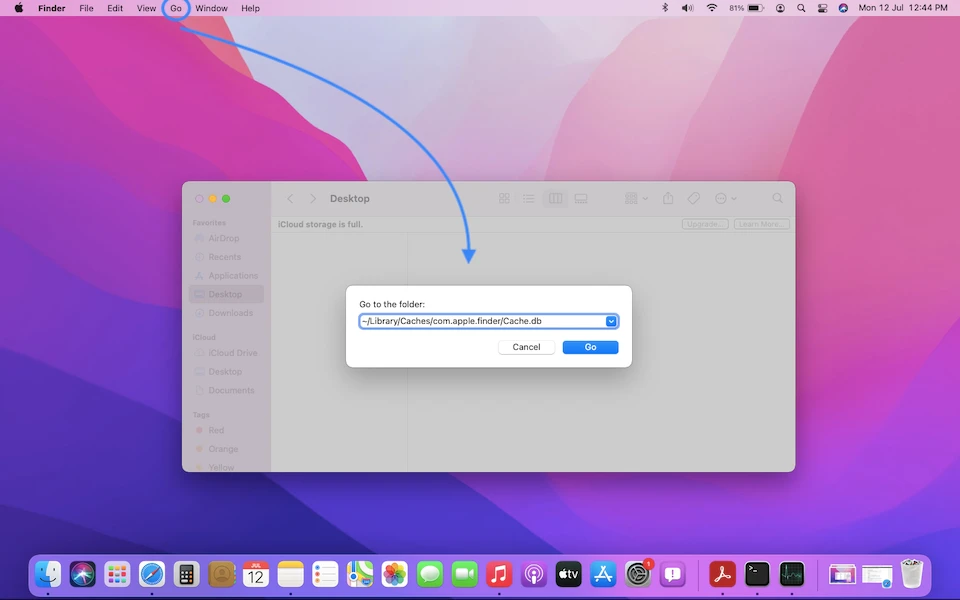
Why is Your Mac Dock Not Responding?
The unresponsiveness of the Mac Dock can occur due to various reasons. Here are some possible causes:
1. Software or system issues: A malfunctioning or buggy software can lead to the Dock becoming unresponsive. This can happen if the Dock process itself hangs or if there is a conflict with other running processes.
2. Insufficient system resources: If your Mac’s CPU or RAM is overloaded, it can result in the Dock not responding. This can occur when you have multiple resource-intensive applications running simultaneously, causing a strain on your system.
3. Animation effects: The animation effects of the Dock, such as magnification, can sometimes put excessive pressure on the CPU and RAM, leading to unresponsiveness. Disabling these effects can help alleviate the strain on your system.
4. Third-party applications or extensions: In some cases, third-party applications or extensions installed on your Mac can interfere with the proper functioning of the Dock. Conflicts between these applications or extensions and the Dock can cause it to become unresponsive.
5. Hardware issues: Though less common, hardware issues can also contribute to the unresponsiveness of the Dock. Faulty cables, connectors, or hardware components related to the display can impact the Dock’s performance.
To troubleshoot the unresponsiveness of your Mac Dock, you can try the following steps:
– Restart your Mac: A simple restart can sometimes resolve temporary glitches and restore the Dock’s functionality.
– Check for software updates: Ensure that your macOS and installed applications are up to date. Software updates often include bug fixes and performance improvements that can address issues with the Dock.
– Disable animation effects: In System Preferences (System Settings in macOS Ventura), navigate to Dock & Menu Bar settings and uncheck ‘Magnification’ to reduce the strain on your system resources.
– Quit problematic applications or extensions: Identify any recently installed or updated applications or extensions that might be causing conflicts with the Dock. Quit or remove them to see if the issue resolves.
– Reset the Dock: You can try resetting the Dock to its default settings. Open Terminal and enter the command: `defaults delete com.apple.dock`. Then, restart the Dock using the command: `killall Dock`.
– Check hardware connections: If the Dock issue is related to hardware, ensure that all cables and connectors are securely connected. Test the display with another device to rule out any hardware problems.
If the above steps do not resolve the issue, it is advisable to seek further assistance from Apple Support or consult with a professional technician to diagnose and fix any underlying problems with your Mac.
How Do You Unfreeze Your Mac Dock?
To unfreeze your Mac Dock, you can follow the steps below:
1. Restart the Dock: One way to resolve the freezing issue is by restarting the Dock. To do this, open the Terminal app on your Mac. You can find it by going to Applications > Utilities > Terminal. When the Terminal window opens, type the following command: “killall Dock” (without the quotation marks). Press the Return key to execute the command. This will force the Dock to restart, and it should unfreeze.
2. Relaunch Finder: If restarting the Dock doesn’t solve the problem, you can try relaunching the Finder. To do this, click on the Apple menu in the top-left corner of your screen and select “Force Quit.” In the Force Quit Applications window, select “Finder” and click on the “Relaunch” button. This will relaunch the Finder and may help unfreeze the Dock.
3. Clear Cache: Sometimes, a buildup of cache files can cause the Dock to freeze. To clear the cache, you can use a third-party cleaning app like CleanMyMac or manually delete the cache files. To delete them manually, go to the Finder and click on “Go” in the menu bar. Then, hold down the Option key and click on “Library.” In the Library folder, navigate to the “Caches” folder and delete the com.apple.dock folder. Empty the Trash afterward.
4. Check for Software Updates: Outdated software can also cause issues with the Dock. Make sure your Mac is up to date by clicking on the Apple menu, selecting “System Preferences,” and then clicking on “Software Update.” If there are any available updates, install them and restart your Mac.
5. Restart Your Mac: If none of the above steps work, the final option is to restart your Mac. Sometimes a simple restart can resolve various software issues, including frozen Docks. Click on the Apple menu and select “Restart” to reboot your Mac.
Remember, if the issue persists or if you’re uncomfortable performing these steps on your own, it’s always a good idea to reach out to Apple Support or a professional technician for assistance.
Why Can’t You Click Anything On Your Dock?
There are several possible reasons why you may be experiencing difficulties clicking on items in your Dock. Here are some potential causes and solutions:
1. Unresponsive Dock: Sometimes, the Dock can become unresponsive due to a software glitch. To fix this issue, you can try restarting the Dock. Open Terminal (Applications > Utilities > Terminal) and enter the following command: sudo killall Dock. This will force quit the Dock, and it should restart automatically.
2. Frozen Dock: If your Dock appears frozen and unclickable, it could be due to a specific application or process causing the problem. Try quitting any recently opened or problematic applications to see if that resolves the issue. You can also check Activity Monitor (Applications > Utilities > Activity Monitor) to identify any processes using excessive system resources and force quit them if necessary.
3. Full Dock: If your Dock is too crowded with icons, it may become difficult to click on them. Consider removing unnecessary icons from the Dock by dragging them off until you see the remove (X) symbol and releasing. Alternatively, you can right-click on the icon and select “Options” > “Remove from Dock.”
4. Incorrect Dock settings: It’s possible that your Dock settings may have been modified, causing the clicking issue. To check your Dock settings, go to System Preferences > Dock. Make sure the “Size” slider is adjusted appropriately, and the “Magnification” and “Position on screen” options are set to your preference. You can also try toggling the “Automatically hide and show the Dock” option to see if it resolves the problem.
5. System updates: In some cases, an outdated or incompatible system software version can lead to issues with the Dock. Check for any pending system updates by going to System Preferences > Software Update and install any available updates.
If none of these solutions work, logging out and logging back in or restarting your computer may help resolve the problem. If the issue persists, it may be necessary to seek further assistance from Apple Support or an IT professional.
How Do You Restart Your Dock?
To restart your Dock, follow these steps:
1. Disconnect your laptop from the docking station. This can be done by gently pulling the laptop away from the dock until it is detached.
2. Locate the power button on the docking station. It is usually located on the front or back of the dock, depending on the model.
3. Press and hold the power button for a few seconds. This will force the docking station to shut down.
4. Release the power button and wait for a few seconds.
5. Press the power button again to turn on the docking station. You may need to hold it for a few seconds until the power indicator light comes on.
6. Once the docking station has restarted, you can reconnect your laptop by placing it back onto the dock. Make sure it is properly aligned and securely attached.
By following these steps, you should be able to restart your Dock and resolve any potential issues or glitches that may have occurred.
Conclusion
When your Mac dock becomes unresponsive, it can be frustrating and hinder your productivity. However, there are several potential solutions to this issue. One common cause is the excessive pressure placed on the CPU and RAM due to animation effects. By disabling these effects in the Dock & Menu Bar settings, you can alleviate the strain and potentially resolve the problem.
Another possible solution is to restart the dock using the Terminal application. Launch Terminal, type the command “killall Dock,” and press Enter to execute it. This will force the dock to restart, and in most cases, it should resume normal functionality. If this doesn’t work, you can try disconnecting the laptop from the docking station and power cycling the docking station itself. This may help in cases where the dock is connected to an external display or peripherals.
Troubleshooting a non-responsive Mac dock requires some technical knowledge but can often be resolved with a few simple steps. By following the suggestions provided and exploring additional troubleshooting options, you can regain control of your dock and continue using your Mac efficiently.

